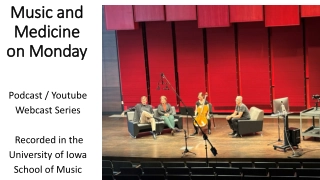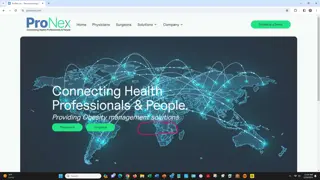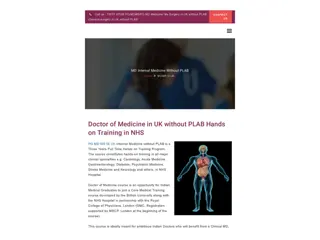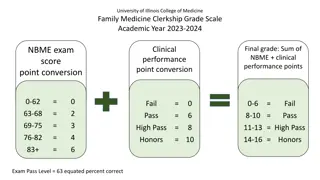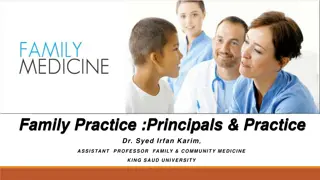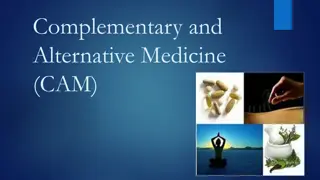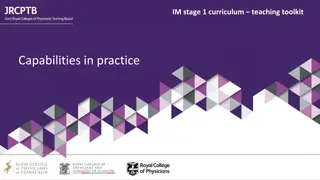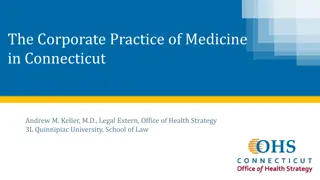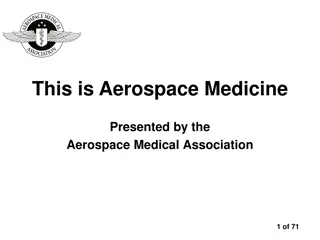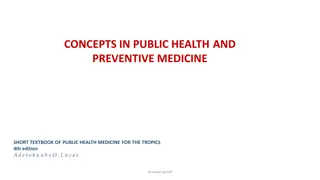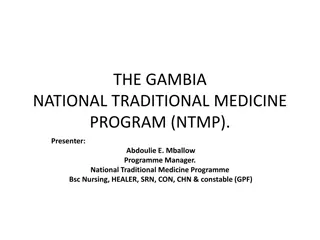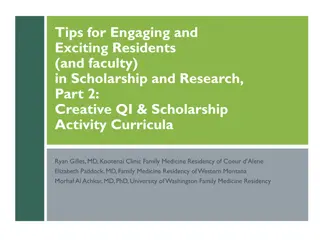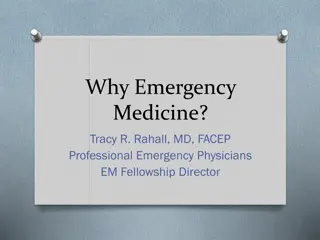
Community-Oriented Primary Care in Family Medicine
Explore the concept of Community-Oriented Primary Care (COPC) in Family Medicine, a systematic approach focusing on improving community health by addressing population needs, utilizing public health principles, epidemiology, and local resources. Learn about the shift from traditional primary care to COPC, its process components, and the significance of Patient-Centered Medical Home (PCMH) in enhancing patient health outcomes.
Download Presentation

Please find below an Image/Link to download the presentation.
The content on the website is provided AS IS for your information and personal use only. It may not be sold, licensed, or shared on other websites without obtaining consent from the author. If you encounter any issues during the download, it is possible that the publisher has removed the file from their server.
You are allowed to download the files provided on this website for personal or commercial use, subject to the condition that they are used lawfully. All files are the property of their respective owners.
The content on the website is provided AS IS for your information and personal use only. It may not be sold, licensed, or shared on other websites without obtaining consent from the author.
E N D
Presentation Transcript
1 PRACTICE OF FAMILY MEDICINE By Dr. Muslim N. Saeed FAMCO dept./ Thi-Qar medical college April 16th,2019 4thstage
2 Learning Objectives To discuss some peculiar characteristics of the practice of Family Medicine such as community-oriented primary care and patient-centered medical home.
3 COMMUNITY ORIENTED PRIMARY CARE
4 Definition Community Oriented Primary Care (COPC) is a systematic process that helps to identify the health needs of a defined population and to address them. The ultimate goal of COPC is to improve the health of the community. COPC uses the principles of public health, epidemiology and primary care in addressing the health of the community. COPC takes also into consideration the environmental and social determinants of health. COPC relies on resources available in the community.
5 A shift from Primary Care to COPC Primary Care COPC Focus on individuals Targets members of a population Focuses on the health needs of the individual patients Use of epidemiologic tools to assess health needs Planning of services is based on the utilization by active patients Considers the health needs of the target population while planning The team is composed mainly of the health care professionals in the primary health care center A multidisciplinary team composed of health care professionals from the center and community members
6 COPC Process Component Description Identify the target population and list its characteristics. Conduct a health needs assessment of the community List the health problems by priority Select a health problem that needs to be addressed (priority, feasibility) Develop an intervention and implement it (use resources inside the primary health care center and within the community) Conduct periodic monitoring of the intervention and modify as needed. Evaluate the impact of the intervention on the target population Define the community Identify the health problems of the community Plan and implement the intervention Monitor the implementation
7 PATIENT-CENTERED MEDICAL HOME
8 Definition A Patient-Centered Medical Home (PCMH) is a model of care that aims at improving the health of the patients : o Through the delivery of continuous, comprehensive, compassionate , culturally sensitive, safe and good quality care o by a personal physician who collaborates the care needed with a team of health care professionals o while responding to the needs of the patients and making health care accessible to them. Its joint principles were first endorsed by the American Academy of Family Physicians, the American College of Physicians, the American Academy of Pediatrics, and the American Osteopathic Association.
9 PCMH Principles Personal physician in a physician-directed medical practice Whole person orientation Care is coordinated and integrated Quality and safety emphasis Enhanced patient access to care Payment
Personal Physician in a Physician- Directed Medical Practice Each patient is followed up by a personal physician who is trained to provide first contact, continuous and comprehensive care. The personal physician leads a multidisciplinary team who collaborates in the provision of care to the patients.
Whole Person Orientation The personal physician responds to the health needs of the patients either through direct care provision or through coordination of care with other health care professionals as needed. Care covers all stages of life (from birth till end of life). Care covers preventive and curative care (both acute and chronic).
Coordinated and Integrated Care Care is coordinated across all the elements of the health care system including primary care, secondary care, and tertiary care as well as the patients' community (home care, community- based services).
Quality and Safety Emphasis Use of evidence-based medicine and clinical decision support tools in decision making. Patients participate actively in the decision making regarding their health conditions. Engagement in quality improvement projects.
Enhanced Patient Access to Care Make health care accessible and available through different systems such as: o open scheduling o expanded hours o new options that will enhance communication between patients, their personal physician, and the staff in the health care facility.
Payment The payment should appropriately recognize the added value provided to patients.

